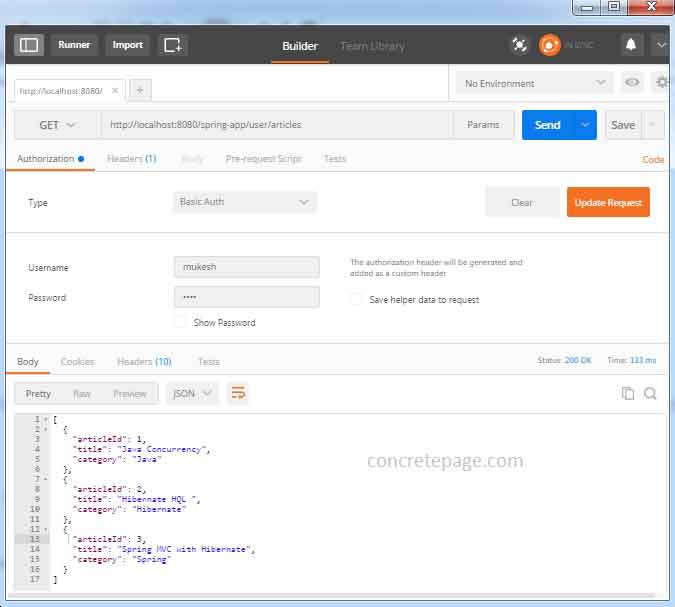

- #Spring jpa annotations update
- #Spring jpa annotations code
- #Spring jpa annotations password
- #Spring jpa annotations download
I have been working with hibernate for quite some time and I’ve realized that the best way to model a one-to-many relationship is to use just annotation on the child entity. The best way to model a one-to-many relationship in hibernate We have also specified the log levels for hibernate so that we can debug all the SQL statements and learn what hibernate does under the hood. This is made possible by the property -auto = update. The tables will automatically be created by hibernate from the Post and Comment entities that we will define shortly. Also, create a database named jpa_one_to_many_demo in MySQL before proceeding to the next section.
#Spring jpa annotations update
# DATASOURCE (DataSourceAutoConfiguration & DataSourceProperties) = jdbc:mysql://localhost:3306/jpa_one_to_many_demo?useSSL=false&serverTimezone=UTC&useLegacyDatetimeCode=false = root = root # Hibernate # The SQL dialect makes Hibernate generate better SQL for the chosen database .dialect = 5InnoDBDialect # Hibernate ddl auto (create, create-drop, validate, update) -auto = update .SQL = DEBUG .type = TRACEĭon’t forget to change the and as per your MySQL installation. Open src/main/resources/application.properties file and add the following properties to it.
#Spring jpa annotations password
Since we’re using MySQL as our database, we need to configure the database URL, username, and password so that Spring can establish a connection with the database on startup. We’ll create them shortly.” Configuring the Database and Logging ” Your bootstrapped project won’t have model, controller, repository and exception packages, and all the classes inside these packages at this point.
#Spring jpa annotations download
Click Generate to download the project.įollowing is the directory structure of the project for your reference.Select Web, JPA and Mysql dependencies.Click Options dropdown to see all the options related to project metadata.Enter Artifact as “jpa-one-to-many-demo”.Let’s use this repository in our service and controller layer to show the results.Spring init -n =jpa-one-to-many-demo -d =web,jpa,mysql -package-name = jpa-one-to-many-demoĪlternatively, You can generate the project from Spring Initializr web tool by following the instructions below. Public Account findAccount (String accountNumber) public interface AccountRepository extends JpaRepository "select a from Account a where a.accountNumber = ?1") We are also adding a query to find each account by their ID. So when JPA evaluates this, it will find and map the entire branch object instead of just the branch_id.īy doing the many to one mapping, whenever we query for Account entities, we can also hold the information about its Branch details.įor example, let’s write Spring Jpa Repository interface for the Account entity. And we also marked this object field as By using this annotation, we are letting Spring Data JPA know that this is a join with a many to one relationship.
#Spring jpa annotations code
} Code language: Java ( java ) public class = GenerationType.IDENTITY)Īs you see, We have included the Branch object itself instead of “branch_id”. ( 5, '1231231235', 1, 'John5 Doe5', 43540.13) Code language: SQL (Structured Query Language) ( sql )Īs you can see, “ many” account records map to “ one” branch record. Insert into account ( id, account_number, branch_id, full_name, balance) insert into branch ( id, branch_name, branch_code)

For example, take a look at the records of Account and Branch tables here. JPA allows you to define Many-to-one relationships between entity classes using the annotation. Multiple accounts that belong to a single branch of a bank Annotation in Spring Data JPA


 0 kommentar(er)
0 kommentar(er)
